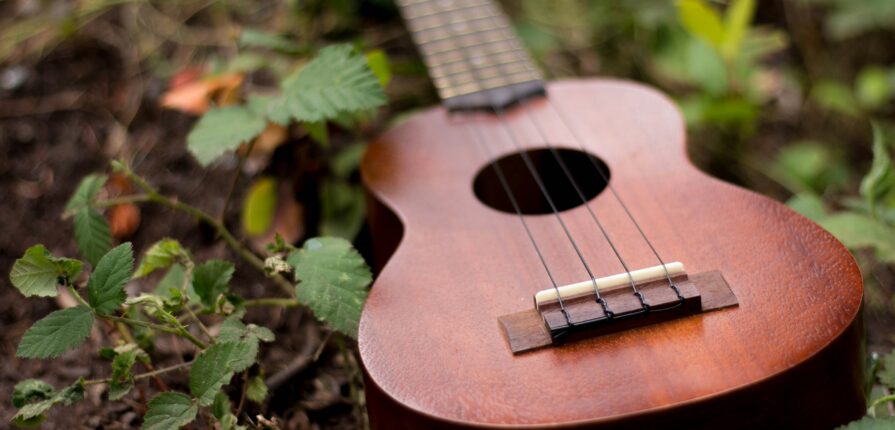From the earliest civilizations to today’s most innovative producers, nature has been one of humanity’s greatest muses. The sounds of our birdsong at dawn, the crash of ocean waves, or the whisper of wind through trees have always influenced the way we create and experience music.
These sounds don’t just serve as background noise; they are woven into our culture, emotions, and even our scientific understanding of the world of sound.
By listening closely to nature, musicians across centuries have discovered melodies, rhythms, and textures that transcend time and genre. Learn how nature inspires music!
-Thursday, October 2
Nature as Humanity’s First Music Teacher
Long before instruments existed, humans were surrounded by soundscapes shaped by the natural world. The crackle of fire, the steady rhythm of rainfall, and the booming echo of thunder were some of the first “beats” that early humans ever heard. Anthropologists believe that ancient instruments like bone flutes or animal-skin drums were created to imitate these natural sounds. For example, early flutes often mimicked birdsong, while drums replicated thunder and rainfall during rituals. Nature was humanity’s first teacher of rhythm, melody, and harmony.
- The Influence of Birdsong
Birds have always been a particularly strong inspiration for musicians. Their complex and melodic calls are often described as some of the most musical sounds in nature. Paul McCartney famously drew inspiration from the song of the blackbird when writing Blackbird, one of The Beatles’ most iconic acoustic tracks. Meanwhile, French composer Olivier Messiaen dedicated much of his career to notating birdsong and incorporating it into his classical works, treating the voices of birds as if they were instruments in an orchestra. These examples highlight how birds have shaped both popular and classical music in profound ways.
- The Power of Water, Wind, and Earth
Water and wind are also central to music inspired by nature. The rhythm of waves crashing against the shore or the soft pattern of rain creates a soothing cadence that composers often try to capture. Modern producers frequently record rainfall, storms, or river streams to add texture to their music. Pink Floyd’s Grantchester Meadows opens with the sounds of birds and buzzing insects, transporting listeners into a rural landscape. Björk’s experimental album Biophilia takes this a step further, blending the sounds of earthquakes, volcanoes, and water with electronic beats to create a musical experience that feels both primal and futuristic.
Music, Nature, and the Human Connection
Field recordings have transformed the way we experience music in the modern era. Thanks to technology, musicians can now capture the sounds of nature with remarkable clarity, weaving them into compositions that feel both immersive and intimate. Ambient and electronic artists like Brian Eno and Aphex Twin have long relied on natural recordings rainfall, birdsong, or the crackling of a fire to create soundscapes that transport listeners into calming, almost meditative states. Even lo-fi playlists often draw on these elements, using subtle background textures to evoke comfort and focus. In many ways, technology has brought the outdoors indoors, keeping us connected to nature even in our most digital environments.
The effect isn’t just artistic but also scientific. Research shows that natural sounds such as flowing water or gentle wind can lower stress, reduce heart rate, and sharpen concentration. Psychologists suggest this response is deeply rooted in our evolution: we feel safer and more at ease when surrounded by the sounds of nature, which historically signaled healthy, habitable environments. By embedding these cues into music, artists are not only experimenting with creative expression but also engaging with our biology in ways that calm, inspire, or refocus us.
Beyond personal well-being, nature-inspired music often carries a wider environmental message. Eco-conscious musicians use soundscapes to draw attention to issues like climate change, deforestation, and ocean pollution. Enya, for instance, has long incorporated wind and water into her ethereal tracks, creating an almost spiritual connection to the Earth. Sound artists, too, design immersive experiences that replicate forests or oceans, inviting listeners to reflect on the fragility of these ecosystems. In this sense, music becomes more than entertainment; it becomes a call to awareness and preservation, reminding us of the deep bond between art, humanity, and the natural world.
A timeless source of inspiration!
From the chants of ancient civilizations to today’s experimental sound designers, nature has always been a collaborator in the creation of music. Its rhythms, melodies, and harmonies remind us that sound is everywhere if we choose to listen. Whether it’s birdsong layered into a symphony, waves added to an ambient track, or rain sounds accompanying a lo-fi playlist, nature’s music grounds us and connects us to something bigger than ourselves. For musicians and listeners alike, it’s a timeless reminder that the Earth itself is a living, breathing instrument.


